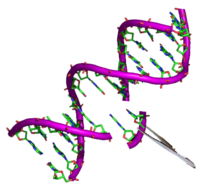
Photo from wikipedia
The four polycyclic aromatic hydrocarbon markers (PAH4) of benzo[a]anthracene (BaA), chrysene (Chr), benzo[b]fluoranthene (BbF), and benzo[a]pyrene (BaP) are indicators showing polycyclic aromatic hydrocarbon (PAH) contamination levels in Chinese medicine raw… Click to show full abstract
The four polycyclic aromatic hydrocarbon markers (PAH4) of benzo[a]anthracene (BaA), chrysene (Chr), benzo[b]fluoranthene (BbF), and benzo[a]pyrene (BaP) are indicators showing polycyclic aromatic hydrocarbon (PAH) contamination levels in Chinese medicine raw materials (CMRMs), extracts and health food products; Samples of herbal medicine, herbal extracts, and food supplements were extracted with n-hexane, then cleaned up sequentially on Florisil and EUPAH solid-phase extraction (SPE) columns. A gas chromatography–mass spectrometry method for the determination of four polycyclic aromatic hydrocarbon markers in Chinese medicine raw material, extracts, and health food products was established; In spiked-recovery experiments, the average recovery was about 78.6–107.6% with a precision of 2.3–10.5%. The limit of quantification (LOQ) and limit of detection (LOD) of the PAH4 markers in this method were 2.0 μg/kg and 0.7 μg/kg, respectively. When the developed method was utilized to determine PAH4 contents in 12 locally available health food products, 3 samples contained over 10.0 μg/kg BaP, and 5 samples contained over 50.0 μg/kg PAH4. The European Union (EU) limits for BaP and PAH4 are 10 and 50.0 μg/kg, respectively; therefore, more attention must be drawn to the exposure risk of BaP and PAH4 in CMRMs, their extracts, and health food products. According to the risk assessment based on the Margin of Exposure (MOE) method, it is recognized that the products mentioned in this study pose a low risk.
Journal Title: Molecules
Year Published: 2022
Link to full text (if available)
Share on Social Media: Sign Up to like & get
recommendations!